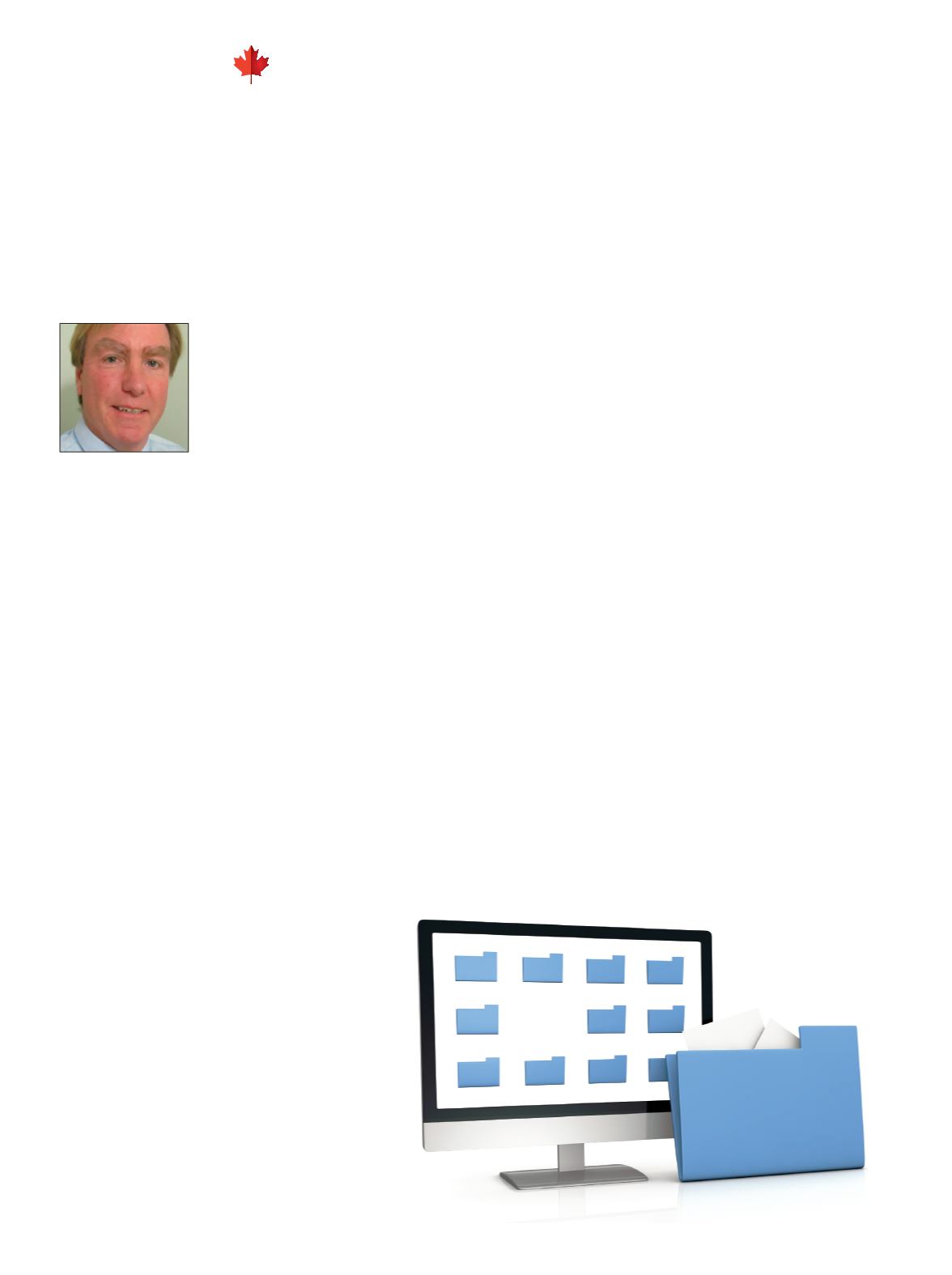

Act and Local Government Act mandates.
“We went through a pre-qualification pro-
cess and then a closed RFP invite process,”
Knowles said. “Rio proved the best fit for
our needs.”
Map and Classify
Choosing Laserfiche was the easy part. Be-
fore installing it, the team created a system
to migrate a million or more records from
its old electronic document management
and classification system. First, it used a
spreadsheet to map out the project and
figure out where things existed in Lotus
Notes. Next, it had to decide where it was
going to reside on the new system and how
to get it there.
Then it was time for cleanup and docu-
ment destruction before moving on to
setting-up servers and actually building
migration scripts. Because there wasn’t
any document naming when the District
of Mission used Lotus Notes and because
not all employees understood the district’s
records retention schedules, the organiza-
tion needed to carefully control the ways
in which employees filed records into the
new system.
Officers of Primary Responsibility (OPRs)
10
/ Canadian Government Executive
// November 2015
Innovation
Part of the problem was that Lotus
Notes, the software that had made pos-
sible the great leap forward in 1993, al-
lowed everyone in the organization to file
anywhere and everywhere. There was no
consistency in document naming or index-
ing. “It was turning into a bit of a free for
all,” Knowles observed.
The IT department, which manages the
documents of nearly all of the municipal-
ity’s departments, sought a solution that
was fully compliant with the most de-
manding document security standards
and that had a track record. Ideally, the
systemwould live up to British Columbia’s
Local Government Management Associa-
tion (LGMA) standards.
After a closed RFP process, the District of
Mission turned to Ricoh Canada, a reseller
of Laserfiche ECM. Ricoh recommended
the software designers Rio Product, as its
flexible licensing structure allows the gov-
ernment to expand, or shrink, its use with-
out having to negotiate a new contract.
Their ECM system was compliant with
HIPAA and supported LGMA standards,
while its robust search engine and index-
ing abilities promised to significantly ease
compliance with Freedom of Information
A
lmost a quarter century ago,
when most municipalities were
rummaging through file cabi-
nets and sifting through folders
for specific documents, and the internet
was still in the future (to say nothing of
“cloud computing”), the District of Mis-
sion in British Columbia became an early
adopter of an electronic document man-
agement system to organize its documents
and files.
Today, while many municipalities are
still searching for documents stored in
dozens of file cabinets, the District of Mis-
sion has done away with its electronic
system and replaced it with an enterprise
content management system (ECM) that
has helped it to organize and make search-
able more than a million documents.
Out with Lotus Notes, in
with Laserfiche
The old system was scanning-intensive,
and demanded a time-and-effort commit-
ment to attach files. There was much du-
plication, a slew of issues with file formats,
and it became challenging to search for
anything. Worse, the organization’s Free-
dom of Information (FOI) processes were
at risk of not meeting legal obligations.
“We were one of the first municipalities
doing electronic document management
back then,” said District of Mission IT
Manager Chris Knowles. “But we were just
using our own naming conventions and
own organizational structure.”
Managing a Systems
Transformation:
Going Paperless
Tim
Wacker














